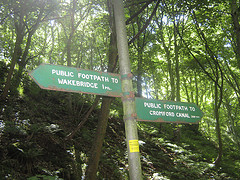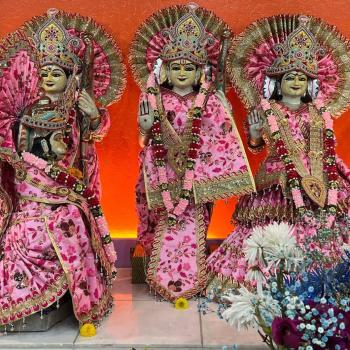Do not follow where the path may lead. Go, instead, where there is no path and leave a trail.
I maintain that truth is a pathless land, and you cannot approach it by any path whatsoever, by any religion, by any sect. That is my point of view, and I adhere to that absolutely and unconditionally. Truth, being limitless, unconditioned, unapproachable by any path whatsoever, cannot be organized; nor should any organization be formed to lead or coerce people along a particular path. … This is no magnificent deed, because I do not want followers, and I mean this. The moment you follow someone you cease to follow Truth. I am not concerned whether you pay attention to what I say or not. I want to do a certain thing in the world and I am going to do it with unwavering concentration. I am concerning myself with only one essential thing: to set man free. I desire to free him from all cages, from all fears, and not to found religions, new sects, nor to establish new theories and new philosophies.

Stirring stuff, these quotes, and they very much appeal to the individualist in all of us. Don’t be a sheep – be a goat. Be a rugged individual blazing your trail through life. But does this approach to spirituality actually work?
In any other art, whether it is cookery, painting, music, or writing, it works better if you learn the techniques and the traditions before you start to experiment. In order to play jazz, you first have to learn how to play your instrument. In order to create fusion dishes, you need to learn the art of cooking in the two traditions you are going to fuse. To create abstract and experimental art, you first need to learn how to paint, how to work with the materials – the canvas, the brushes, the paint; and you learn that by studying traditional techniques and symbolism and perspective, and then you can play around with them to create something original. The same goes for poetry – learn to write sonnets and haiku and so on before you write blank verse; learn how to use metaphor and alliteration, assonance and rhyme.
So why do we think that religion and spirituality are any different? Why do we think that you can just start at some random point and blaze a new trail in the wilderness? Existing techniques and traditions work because they are based on centuries of experience in navigating the pitfalls of the spiritual journey, exploring the depths of the human psyche, and learning to co-operate with like-minded others on the journey.
Religion means either re-connecting (from Latin religare) or re-reading (from Latin relegere). In other words, we re-connect with the Divine, or Nature, or other people (both human and non-human), or all three. And we re-read, and re-interpret, existing traditions and practices, fitting them into our own context.
No-one is really very clear on what spirituality means – it has been memorably described (by Lucy Bregman) as “a glowing and useful term in search of a meaning” – but I usually define it as the response of awe, wonder, compassion and love to the world around us.
But in order to get anywhere on the spiritual journey, we need to have a clear idea of where we are coming from, and where we are going, and how to get from A to B. If the aim of your spiritual journey is to discover your authentic self, then it will be different to that of someone whose aim is to annihilate the self in the oneness of the Divine. If you started out as an atheist, your journey will be different to that of someone who started out as a member of a Pagan family, who will be different from someone who started out as a Christian. Each of these journeys will contain different obstacles and different advantages.
However, all of them will benefit from the maps and stories left behind by other travellers, because we all have shared experiences as embodied beings, with parents, siblings, lovers, and friends, and we all live on planet Earth. These might be symbol systems, mythology, meditation techniques, values, rituals, theology, ethical systems, and so on. When I read writers from other religious traditions, I am constantly thinking, how do I relate this to my Pagan/Wiccan values, theology, philosophy? If you don’t know what your values, theology, and philosophy are, how do you know how to incorporate ideas from another tradition, or reject them if they don’t fit?
This seems to me to be the core problem with pick-and-mix spirituality, or making it up as you go along. If you don’t have a yardstick to compare new ideas against, how do you know if they are any good? If you pick bits and pieces out of various different systems, how do you know that you have a complete set of tools to “get you there”? Your personal biases might predispose you against some aspect of the toolkit that you might actually need to overcome a particular issue.
Pretty much all magical traditions are agreed that you should work through a single system for at least a year before you start to add things from other traditions. This gives you a good grounding in a tradition, and a sense of what will fit and what will not – and what sits well with you in that tradition, and what you might feel the need to modify.
I have now been practising Wicca for nearly 22 years, and in that time I have also explored other traditions (I have practiced both Druidry and Unitarianism, and read up about Heathenry, polytheism, Hinduism, Buddhism, Christian mysticism, Taoism and Judaism) but my main focus was on how these systems sit with my personal worldview. Having practised Wicca for 22 years, of course my worldview has been shaped by that practice, but my practice has also been shaped by my sexuality, my ethics, and my life experiences. But the fact that I have a grounding in a specific tradition, with its community of practitioners, its techniques, rituals, mythology, symbolism, and history has been of inestimable value to me. This is the case even though I have been immensely frustrated at times with the whole gender binary issue, and the tendency of some Wiccans to be hierarchical and to insist that certain things in the tradition have to be done in a particular way. The autonomy of covens, however, allows me to change the bits that I don’t like, whilst the community of practice and the continuity of tradition makes me think carefully before discarding or selecting or changing things.
A liberal Christian friend of mine told me about an excellent piece of Buddhist wisdom: before enlightenment, the hills were hills, and the valleys were valleys; during enlightenment, the hills were valleys, and the valleys were hills; after enlightenment, the hills were hills and the valleys were valleys, but in a new way. In other words, during enlightenment, everything is true and all systems look the same from the vantage point at the foot of the Bodhi tree; but afterwards, we have to live in the real world once more, and that entails engaging with a particular set of symbols and rituals, and following a particular path. This approach does not deny the validity of other paths; it simply states that this is the right path for me personally, because of where I came from, and where I am aiming to get to. It also means you don’t have to reinvent the wheel, and you have a community of fellow-travellers to learn from, and a set of maps to guide you on your way.
The tradition that you choose, and the ways in which you respond to it and modify it, how you inhabit it, will depend upon your pre-existing value system and worldview. But having a system to follow is valuable because then you are not just flailing about in the bushes trying to find a path; rather you are navigating and negotiating existing paths.















